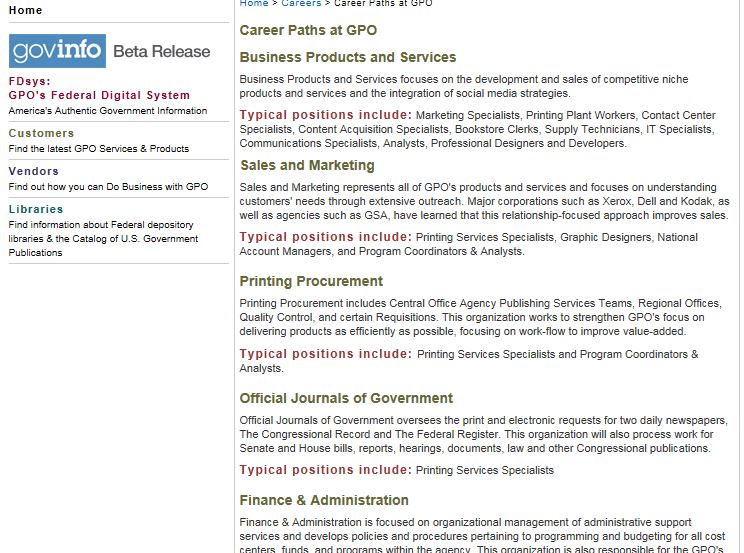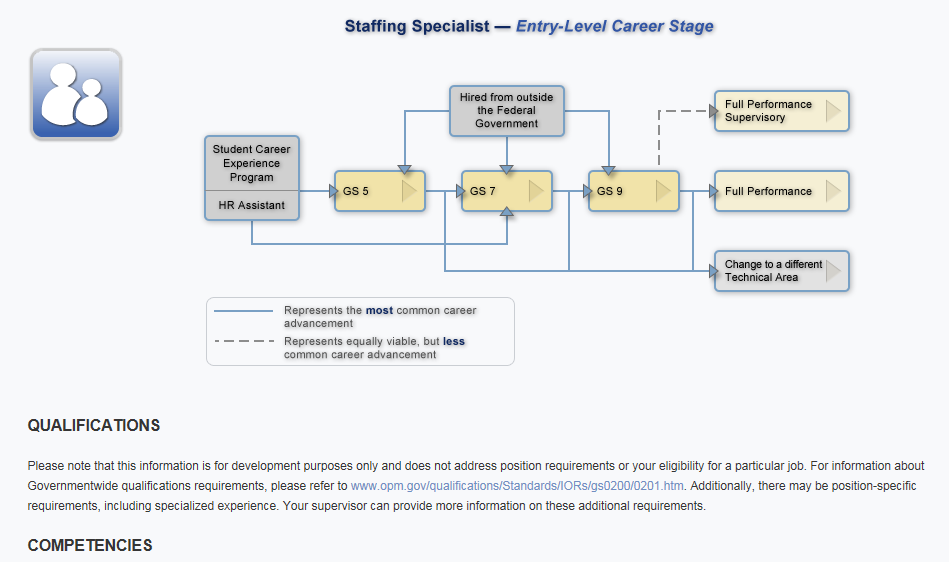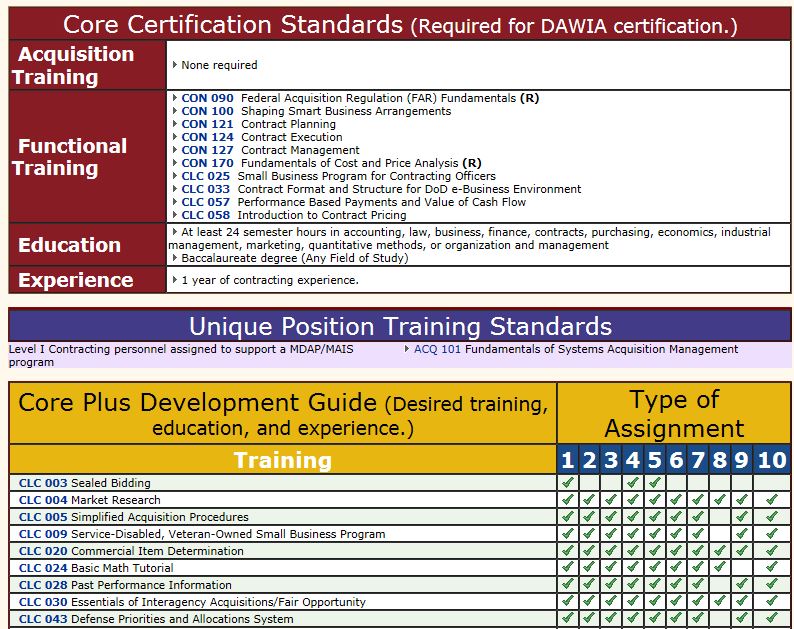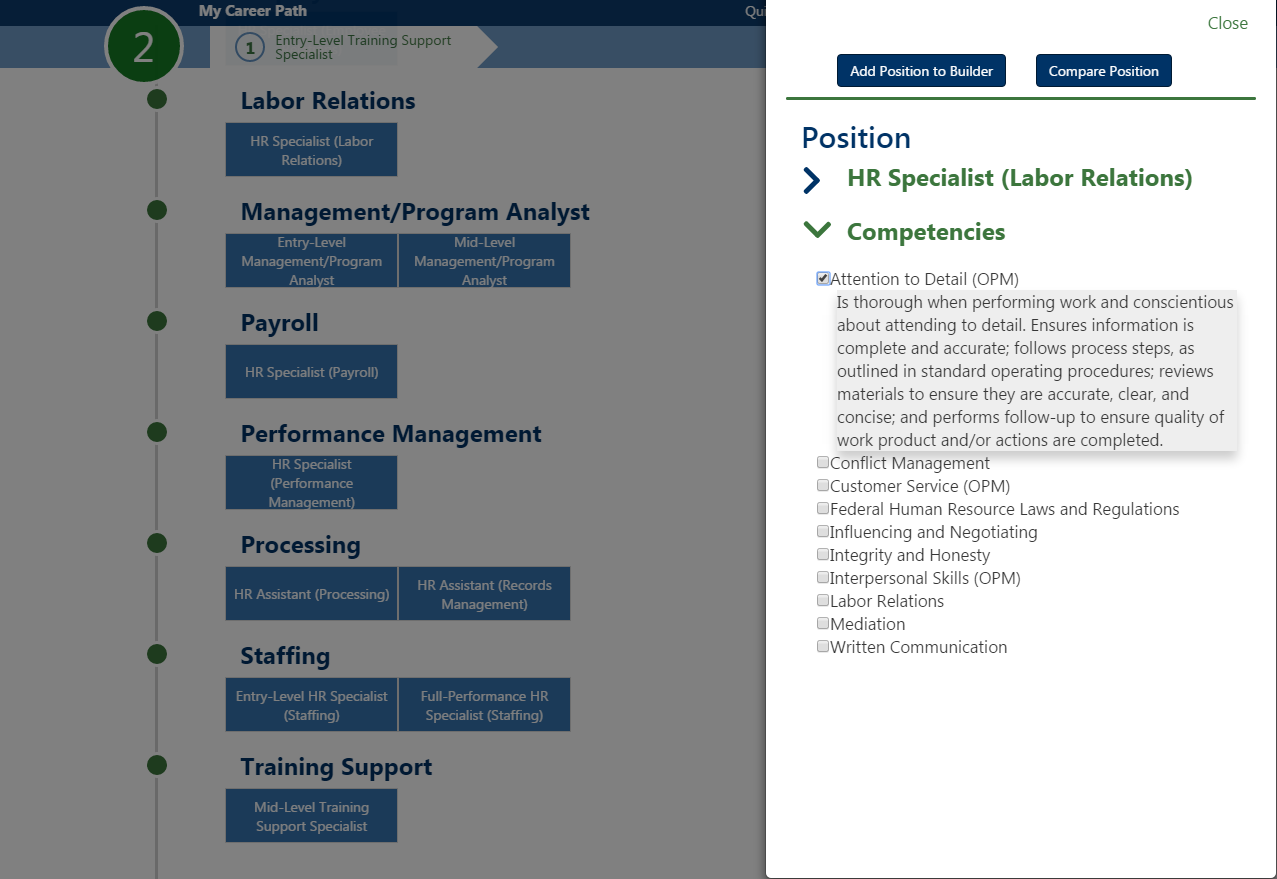![]()
You come into the office five days a week, dependably, 9 a.m. to 5 p.m. You do your work. The days tick by. You get paychecks, pay your bills, look forward to the weekend and vacations. You feel lucky to have a job. Some of your friends are still looking—or still working menial jobs. But where are you going? Is this it—from now until you retire in 20, 30, 40 years? You’ve got a job, but have you thought about a career?
You may not see them right now, but there are paths through your organization that lead from your current job to your future. No one path is quite like another. At first glance, you may not see a future that inspires you, but don’t worry. With a little thought and curiosity, you can find your career path.
What does a career path look like?
As shown below, a career path is a sequence of positions you select and the transitions between those positions.

Many organizations have mapped their career paths. They provide career path information to employees through a variety of methods, from simple statements of available job functions to sophisticated, automated tools. Some identify typical paths along a hierarchy. Others show crossover paths between functional areas.
Here are a few examples:
The Government Printing Office Website lists typical job functions:

GPO Career Paths
OPM has identified career paths for HR functions, including competencies needed, proficiency level at each grade, training requirements, job experiences, and suggestions for critical developmental activities.

Example of an OPM Career Path
The Defense Acquisition University supports 15 defined career fields with training, education, and experience standards for three levels of certification.

DAU Standards for a Program Manager
Several agencies, including the FAA, have invested in an online tool that guides employees in building career paths based on their aspirations and interests. Employees can assess skill gaps with future job requirements, learn about the job responsibilities and competencies needed for positions of interest, and identify relevant learning experiences to prepare for their next role. By integrating with employee Individual Development Plans and organizational recruiting systems, the career pathing tool aligns employee activities with organizational strategy. Employees can view their development and performance reviews in the larger context of their careers and organizational objectives. They can more easily find relevant job openings. They can take charge of their own development by conducting self-assessments and requesting feedback outside of the standard performance review cycle.

Example of an Online Career Path Tool
Why You Should Chart Your Career Path
Having a clearly defined career path can help you to:
- Objectively weigh decisions about your job with your long-term goals in mind so you can avoid career dead-ends that may not be apparent today.
- Reach your goals more quickly, so you can get to that interesting and personally meaningful job.
- Plot your own path to pay increases, promotions, and new opportunities.
- Be more motivated because you’ll see every task as a step forward in meeting your goals.
- Gain your boss’s support for training and developmental activities.
- Understand agency leadership’s expectations for how you support the mission.
How to Find Your Career Path
Ultimately, finding your career path is up to you. You’ll need to take the time to reflect on where you are and where you want to go. Matt Trip, Alex Morris, and Josh Quist, Industrial / Organizational Psychologists at C2 Technologies, Inc. have identified three questions to ask yourself:
- Where are you in your career path?
- Where do you want to be?
- How do you get from where you are to where you want to be?
You don’t have to go it alone though. Get the support you need.
- Talk with your HR department. They’ll know the career pathing tools available in your agency.
- Talk with your boss. He/she will know the organization’s goals and how you fit in with those, and can give you the feedback and information you need to understand where you are and where you can go.
- Get support from colleagues both inside and outside of your organization. Find out what they’re doing and ask them to connect you with people who are doing what you want to do.
- Get a coach. As a Federal employee, you can get coaching at no additional cost through the Federal Coaching Network.
You wouldn’t leave on a trip without checking the map and plotting your course. Shouldn’t you plan your career as carefully?
Claudia Escribano is part of the GovLoop Featured Blogger program, where we feature blog posts by government voices from all across the country (and world!). To see more Featured Blogger posts, click here.





Hi Claudia! This post is the perfect tool as I am just about to graduate College and will soon be starting my career. I am inspired to start charting/mapping my goals and objectives to help me clearly define where I want to be after graduation, thanks for the help!
Violet, I am so glad you found it helpful. All the best to you in your new career!